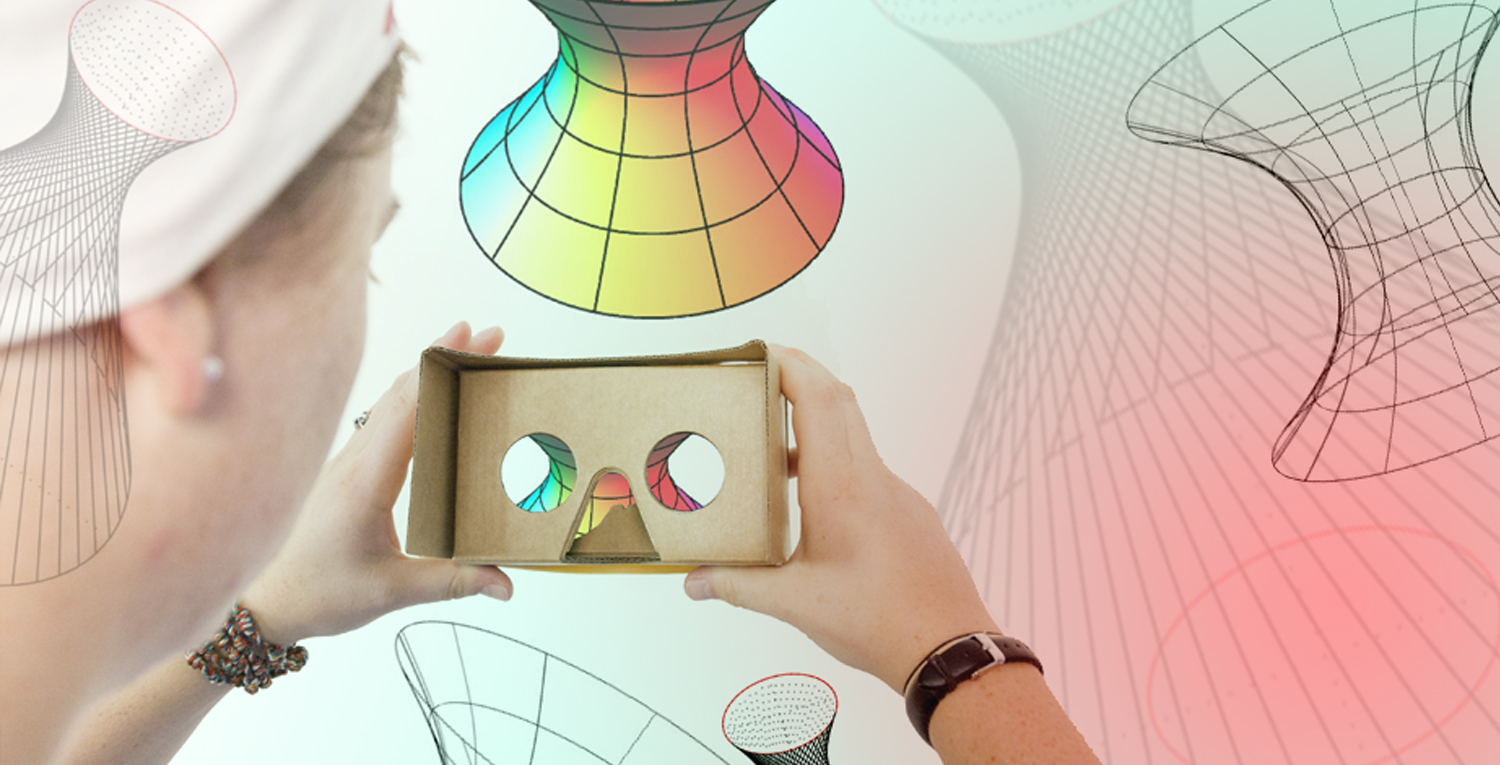Virtual reality turns mathematics up, down and sideways
Technology unleashes potential for bringing math and science to life

Posted on November 17, 2017
One of my most interesting teaching experiences involved observing how Carl, a blind student, perceived math concepts differently than sighted students. What I learned from this student many years ago continues to influence my teaching.
During lessons in multi-variate calculus, which focuses on surfaces in space, my sighted students could see a surface on a screen or page of the text, while Carl described the changes in concavity or a saddle point as if he was feeling the surface in his hands. I was dumbfounded. This was so contrary to my expectations for a blind student because I didn’t believe he could perceive these surfaces as well as my sighted students.
“The sensation of feeling mathematics can be a powerful motivator for continued story.”
Sherrie Serros
Chair of the Department of Mathematics
While these intricate surfaces are generated through written mathematical equations, few physical constructs exist for adding the physical connection to understanding a surface. Carl has inspired me to search for multiple representations in mathematics: numeric, symbolic, dynamic, graphical, physical/concrete and written/oral.
Recent advances in technology offer students altogether new ways to explore the connections between these representations, and it’s the challenge of a modern-day mathematics professor to bring them into the classroom. Augmented reality (AR), virtual reality (VR), and 3D printing provide opportunities for students to think flexibly about mathematical constructs. For visual learners, this may provide an avenue to build interest in mathematics.
Augmented Reality: People are most familiar with the concept of augmented reality when they use their smartphone to scan a QR code. Scanning the code triggers more information to appear on their phone in a variety of formats. In education, an image of a specific homework problem might trigger a video that suggests a particular approach to solve the problem. This way, students have assistance; their struggles become productive without turning to frustration of having to wait for an email response or a professor’s office hour.
Virtual Reality: Through the use of 3D goggles, a student enters into the projected environment. In a mathematics course, this could be used for exploration and experimentation in many areas, such as geometric surfaces or simulation of probabilistic events. I expect that this total immersion in the content will strengthen students’ connections between the symbolic equation for a surface and the “feel” of that surface in the virtual world.
A dynamic representation for a mathematical construct is a natural use of VR. I can envision students building the equations for a rollercoaster, then experiencing their design virtually. They would feel the values of position, velocity, acceleration and jerk, rather than just computing them. The sensation of feeling mathematics can be a powerful motivator for continued study.
3D Printing: For an added tactile experience, a student could use a 3D printer to create a physical model of an abstract surface or shape. For students drawn to visual experiences, through AR/VR experiences in math classes, they may begin to see mathematics in their own futures.
As this technology develops and I continue to realize its potential in the classroom, I’m making progress on that journey Carl started for me to find new representations for my students to experience mathematics.
Sherrie Serros is the chair of the Department of Mathematics. The department recently received an institutional Creative Teaching and Learning grant, funded by a donation from the School Sisters of Notre Dame, to purchase equipment and apps for using VR to teach math and physics.



